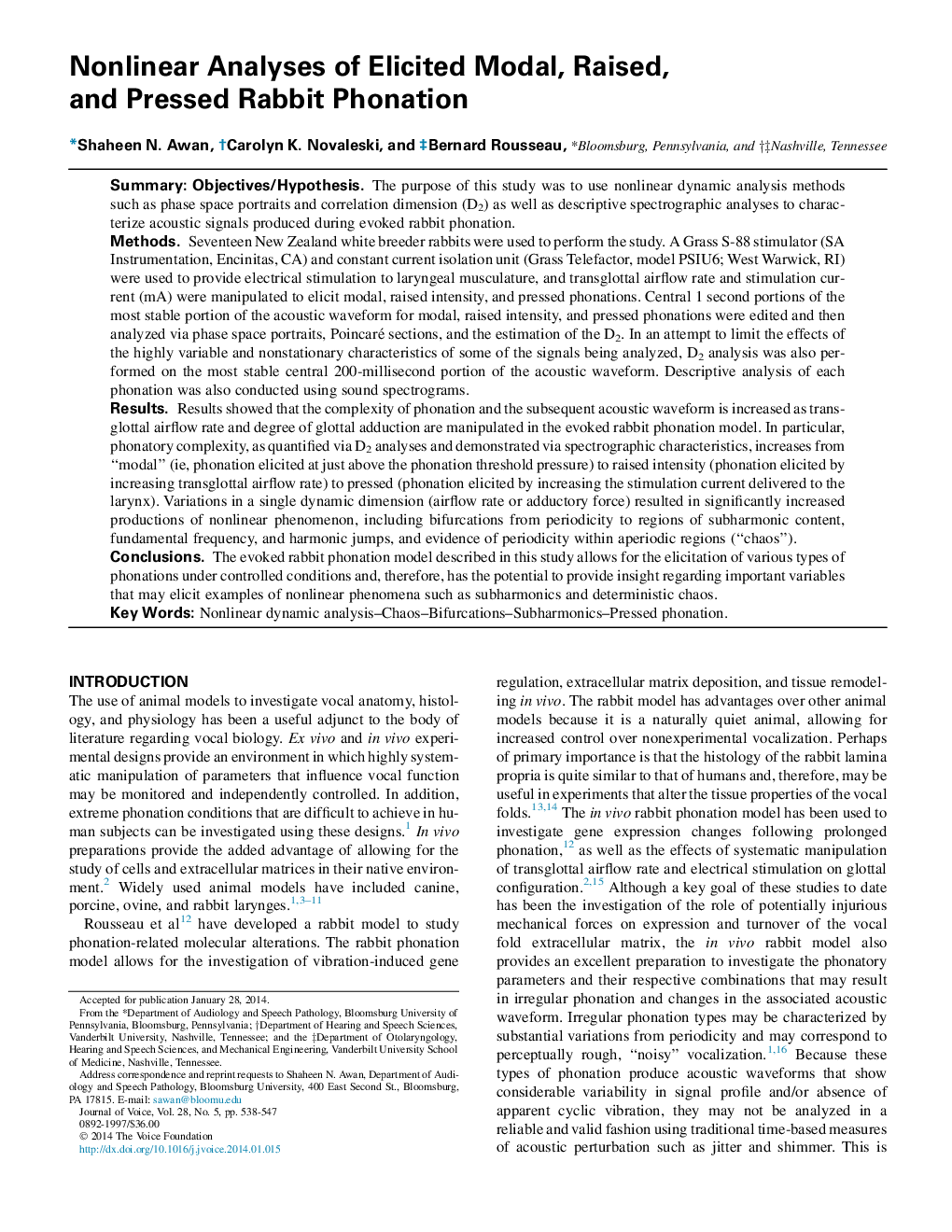| کد مقاله | کد نشریه | سال انتشار | مقاله انگلیسی | نسخه تمام متن |
|---|---|---|---|---|
| 1101678 | 953574 | 2014 | 10 صفحه PDF | دانلود رایگان |
SummaryObjectives/HypothesisThe purpose of this study was to use nonlinear dynamic analysis methods such as phase space portraits and correlation dimension (D2) as well as descriptive spectrographic analyses to characterize acoustic signals produced during evoked rabbit phonation.MethodsSeventeen New Zealand white breeder rabbits were used to perform the study. A Grass S-88 stimulator (SA Instrumentation, Encinitas, CA) and constant current isolation unit (Grass Telefactor, model PSIU6; West Warwick, RI) were used to provide electrical stimulation to laryngeal musculature, and transglottal airflow rate and stimulation current (mA) were manipulated to elicit modal, raised intensity, and pressed phonations. Central 1 second portions of the most stable portion of the acoustic waveform for modal, raised intensity, and pressed phonations were edited and then analyzed via phase space portraits, Poincaré sections, and the estimation of the D2. In an attempt to limit the effects of the highly variable and nonstationary characteristics of some of the signals being analyzed, D2 analysis was also performed on the most stable central 200-millisecond portion of the acoustic waveform. Descriptive analysis of each phonation was also conducted using sound spectrograms.ResultsResults showed that the complexity of phonation and the subsequent acoustic waveform is increased as transglottal airflow rate and degree of glottal adduction are manipulated in the evoked rabbit phonation model. In particular, phonatory complexity, as quantified via D2 analyses and demonstrated via spectrographic characteristics, increases from “modal” (ie, phonation elicited at just above the phonation threshold pressure) to raised intensity (phonation elicited by increasing transglottal airflow rate) to pressed (phonation elicited by increasing the stimulation current delivered to the larynx). Variations in a single dynamic dimension (airflow rate or adductory force) resulted in significantly increased productions of nonlinear phenomenon, including bifurcations from periodicity to regions of subharmonic content, fundamental frequency, and harmonic jumps, and evidence of periodicity within aperiodic regions (“chaos”).ConclusionsThe evoked rabbit phonation model described in this study allows for the elicitation of various types of phonations under controlled conditions and, therefore, has the potential to provide insight regarding important variables that may elicit examples of nonlinear phenomena such as subharmonics and deterministic chaos.
Journal: Journal of Voice - Volume 28, Issue 5, September 2014, Pages 538–547
